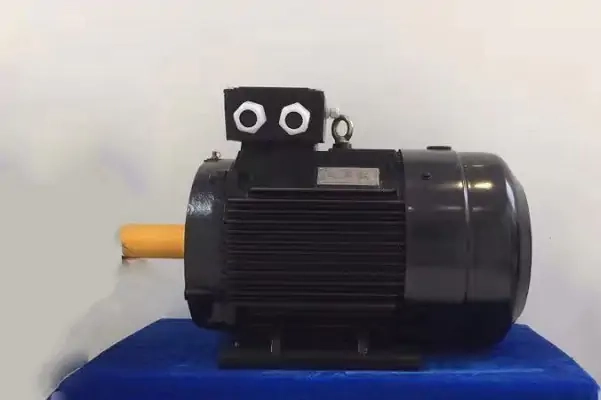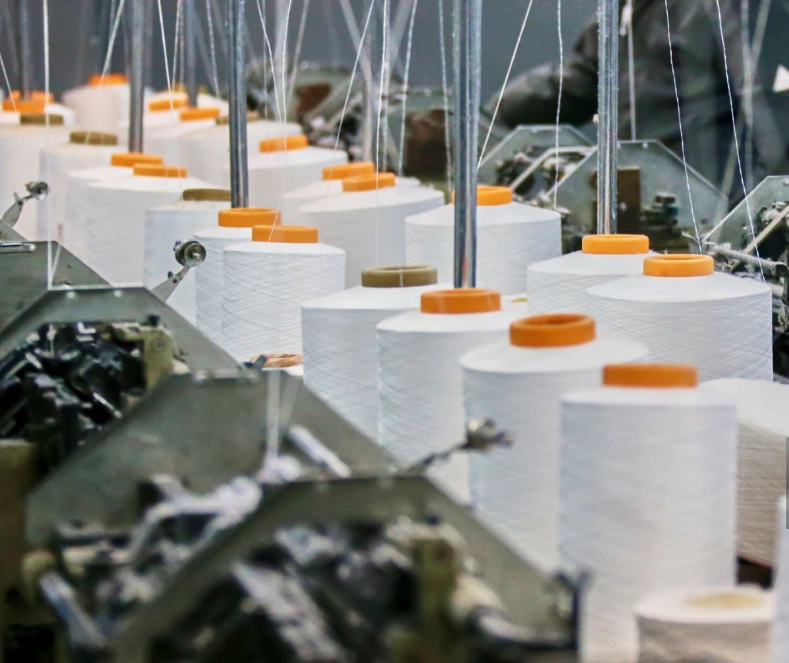Three-phase permanent magnet synchronous motors (PMSMs) mark a major step forward in motor technology. They shine in the textile industry. These motors use permanent magnets, often made from rare-earth materials like neodymium. The magnets create the rotor’s magnetic field. Unlike standard induction motors, PMSMs don’t need rotor current. This cuts energy waste. It boosts overall efficiency. With up to 95% efficiency, PMSMs save 10–20% on energy compared to induction motors. Their small size, strong force at low speeds, and low upkeep needs make them perfect for tasks needing accuracy and toughness.

In textile machines like spinning frames, weaving looms, and knitting devices, PMSMs are vital. These machines need variable speed control. They must work reliably in dusty or humid settings. They also require high force for heavy loads. By pairing with variable frequency drives (VFDs), PMSMs provide exact speed adjustments. They ensure steady product quality. They also lower running costs.
The technical specs of three-phase PMSMs show their excellent performance. These motors have high power density. Their power-to-weight ratio is 20–30% better than induction motors. They feature advanced cooling systems. These allow continuous work without overheating. Standard frame sizes, like IEC 80–160, ensure they fit various textile machines.
Other key performance points include:
These specs highlight the flexibility of PMSMs across different textile uses.
PMSMs are widely used in textile production. Their versatility and efficiency make them ideal. Key uses include:

For example, air-jet weaving benefits from PMSMs’ strong force. It improves shuttle movement speed by 15–20%. Likewise, circular knitting machines reduce flaws by up to 10%. This happens through dynamic speed adjustments from these motors.
Using three-phase permanent magnet synchronous motors in textile machines offers many benefits:
A textile plant using multiple PMSM-driven machines can save thousands yearly on energy. It also improves work efficiency.
Despite their benefits, PMSMs have some challenges:
Some manufacturers say induction motors are enough for simpler tasks. They have lower initial costs. However, PMSMs’ long-term benefits outweigh these costs. Energy savings and less upkeep make them a better choice.
By tackling these challenges, textile manufacturers can maximize PMSM benefits. Proper training helps. Preventive upkeep plans also help. Working with trusted suppliers offering strong support is key. This minimizes drawbacks.
The operation of three-phase permanent magnet synchronous motors (PMSMs) in textile machines blends advanced engineering and precise control. These motors use three-phase AC power. Typically, this is at 380V and 50 Hz. The power energizes stator windings. This creates a rotating magnetic field. The rotor, with permanent magnets, aligns with this field. It achieves synchronous rotation. This sync eliminates slip. Slip is a common issue in induction motors. It ensures better efficiency and performance.
Variable frequency drives (VFDs) are crucial to PMSMs’ work process. They adjust the frequency and voltage sent to the motor. This enables tailored speed and force adjustments. These suit specific textile tasks. For example, in spinning frames, VFDs provide precise speed control. This maintains steady yarn tension and quality.
Modern PMSMs also have programmable logic controllers (PLCs). These monitor key factors like speed, force, and temperature. Real-time monitoring ensures top performance. It also provides fault detection. The strong force at low speeds is a big advantage. It suits heavy textile tasks like weaving and dyeing.
The use of three-phase PMSMs in textiles matches industry trends. These focus on efficiency and green practices. Energy-saving technologies are a priority. Manufacturers aim to cut running costs and environmental impact. With up to 95% efficiency, PMSMs support these goals.
Integration with Industry 4.0 technologies is another trend. Smart systems with IoT enable real-time monitoring. They also support predictive upkeep of PMSM-driven machines. This cuts downtime by up to 15%. It boosts overall productivity.
Customization is growing too. Manufacturers offer tailored PMSM solutions for specific textile tasks. This improves performance. But it raises costs and lead times. Also, the focus on green practices drives motor design innovation. The goal is to use fewer rare-earth materials. This maintains efficiency.
To fully use three-phase PMSMs in textile tasks, manufacturers should take smart steps:
These steps help textile manufacturers boost ROI. They achieve top work performance.
ENNENG provides advanced solutions for textile tasks. The FTYP series includes three-phase permanent magnet AC synchronous motors. These are fully enclosed and self-ventilated. They use rare-earth materials. They deliver high accuracy in speed adjustment over a wide range. They keep a small size and light build.
The open-loop control system in ENNENG’s motors boosts dependability in variable frequency systems. It also cuts costs. With a minimum power factor of 0.95, these motors outperform standard induction motors in efficiency.
ENNENG’s FTY series is another great choice. It suits constant-speed machines in fiber production or printing and dyeing. These motors offer higher locked force, lower locked current, longer lifespan, and simpler upkeep needs.
By using ENNENG’s advanced PMSM technology, textile manufacturers can save energy. They also improve product quality. Reach out to ENNENG today and elevate your performance with advanced motor solutions.